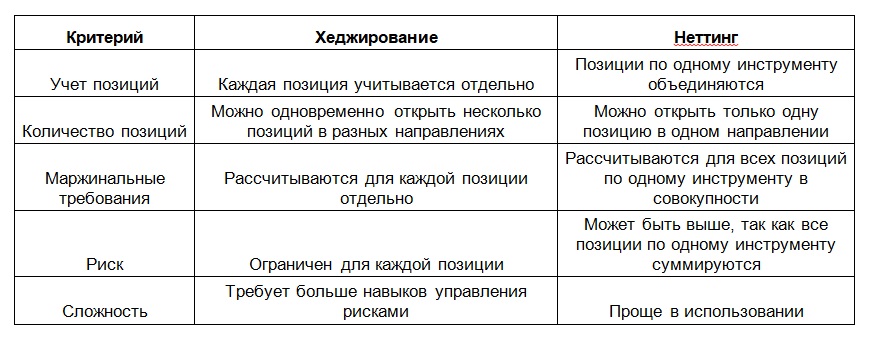Netting or hedging account, what is the difference between these two types of accounts
Hedging and netting accounts are the two main types of accounts used in forex or stock exchange trading.

A hedging account is a type of trading account that allows traders to simultaneously open positions in different directions for the same currency pair.
The main feature of this type of account is the ability to hedge or lock positions , which allows you to reduce exchange rate risks when using certain strategies.
With this type of account, you can simultaneously open several buy and sell orders for one currency pair.
A netting account is a type of Forex trading account that allows traders to open only one position on one currency pair at a time.
For example, you opened a buy position on our all-loved EURUSD currency pair with a volume of 1 lot , and after a couple of minutes you open another buy position with a volume of 0.5 lots. But in the trading platform you do not have two orders of 1 and 0.5 lots, but only one for 1.5 lots.

If you open one long position with a volume of 2 lots and then a short position on the same asset with a volume of 0.8 lots, instead of two orders you will have only one, to buy, with a volume of 1.2 lots.
Key differences between hedging and netting accounts

At the same time, there are some similarities in the work on these accounts:
- Both systems allow you to open positions on the same currency pair in different directions.
- They use margin trading , which makes it possible to increase potential profits using the broker's credit funds.
- Offer access to a wide range of trading instruments.
Which account option is better for trading?
Here you can say how many people have so many opinions. For some, it is more convenient to have only one open order in one direction and simply regulate its volume. And some people prefer to have several positions, sometimes in opposite directions.

For example, I like hedging accounts more, as they have more opportunities, and I am already accustomed to this trading option.
And it’s not so easy to find a broker who opens a netting account; most international brokerage companies allow you to open an account with the possibility of hedging.
How to distinguish a hedge account from a netting account?
The simplest option is if the account type is indicated in its description Hedge or Netting; if this is not indicated, then look in the account description to see whether the amount of collateral is indicated on the position overlap or on collateral locked positions.
If this information is missing, you can look at the asset specification in the trading platform and find the hedged margin indicator there; if it is available, then hedging is allowed.
Well, the easiest option is to ask the broker’s support manager what types of accounts they have and whether hedging is allowed on them.

